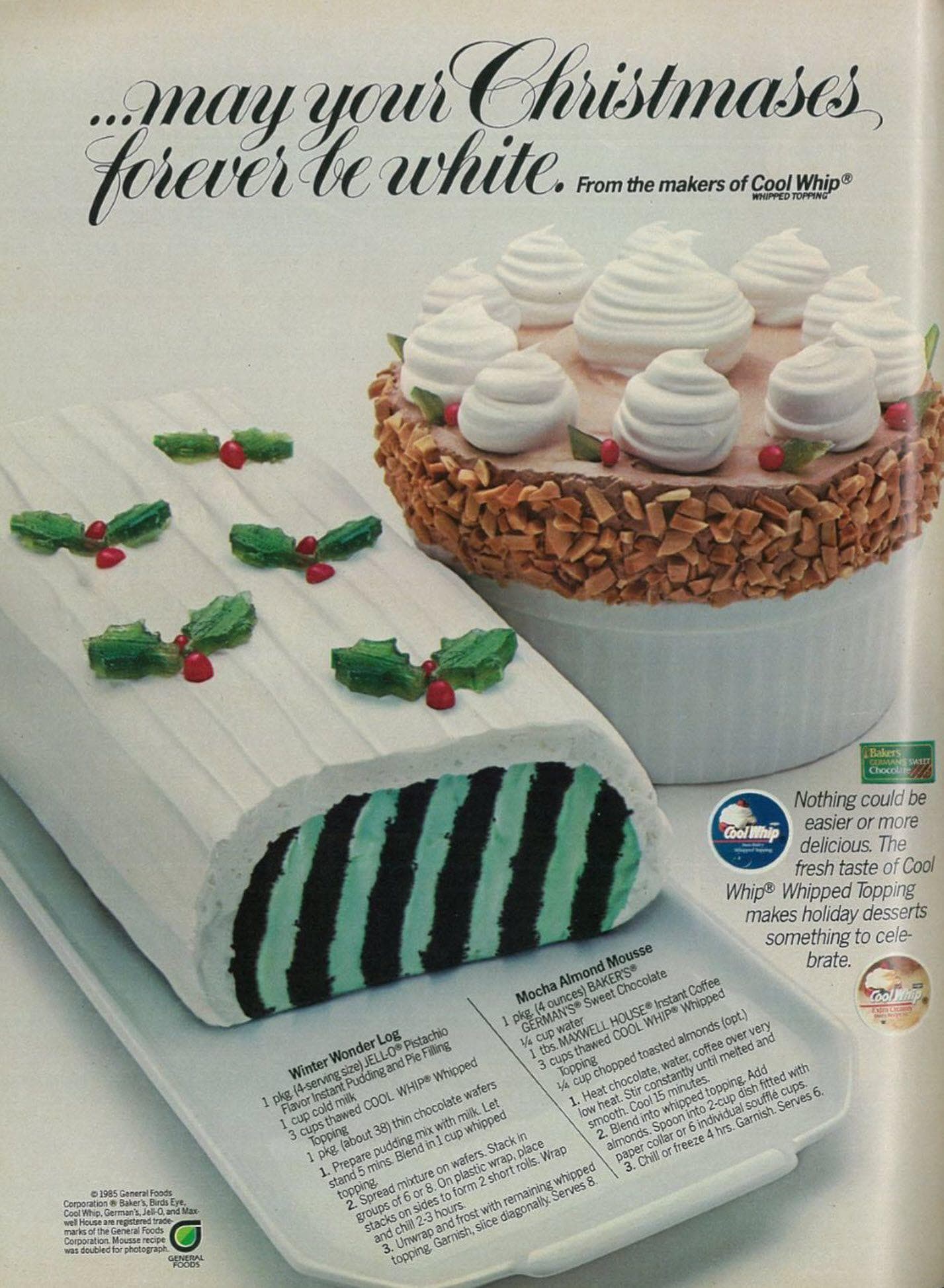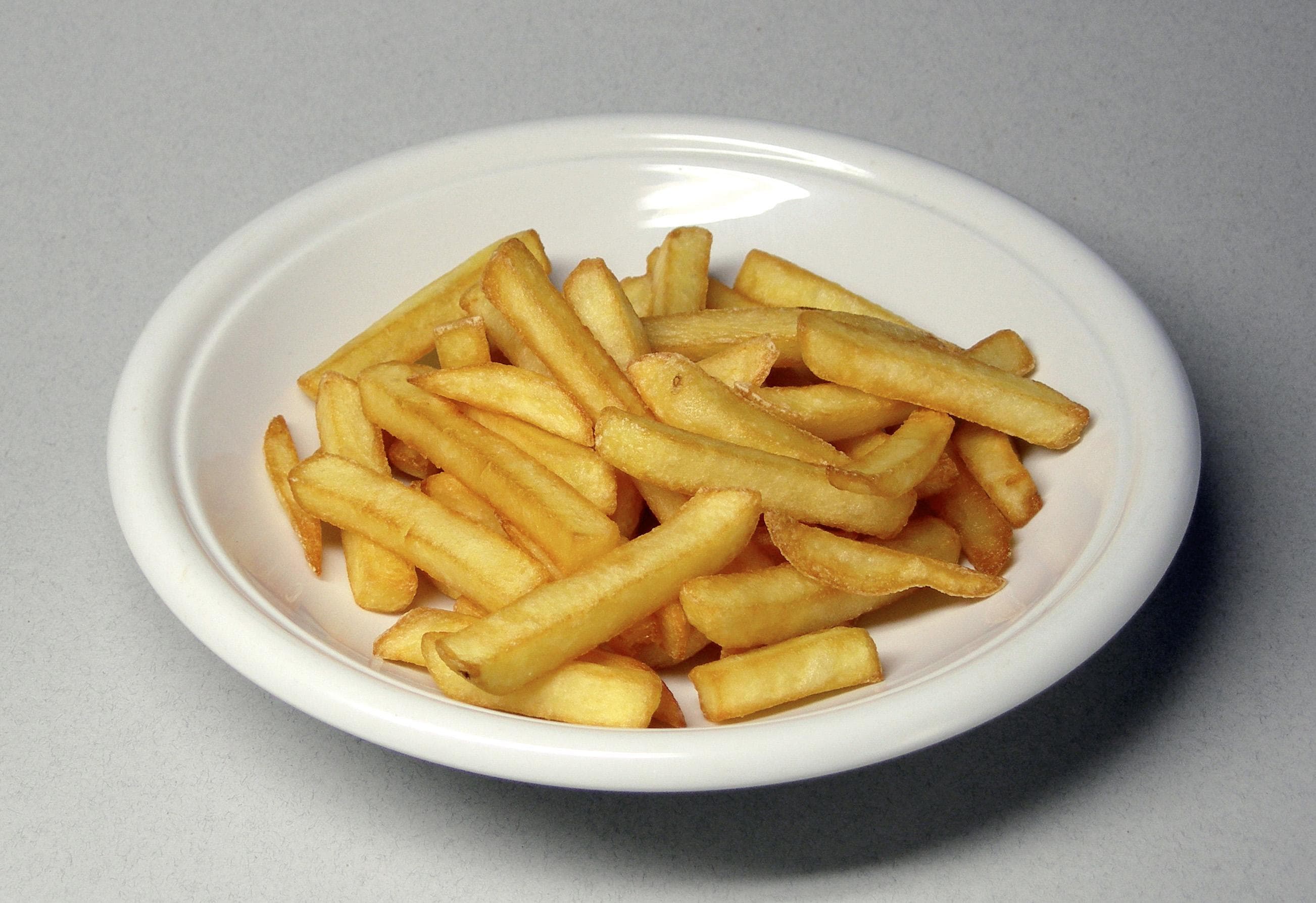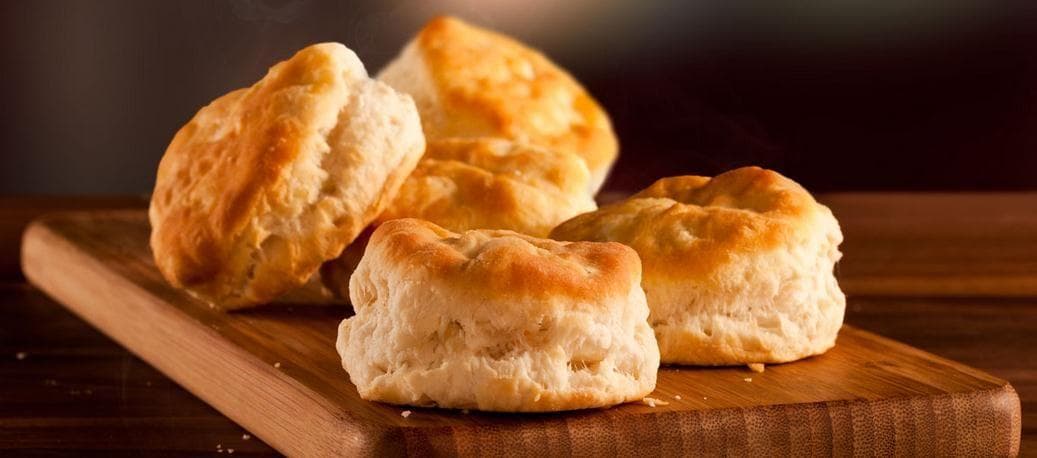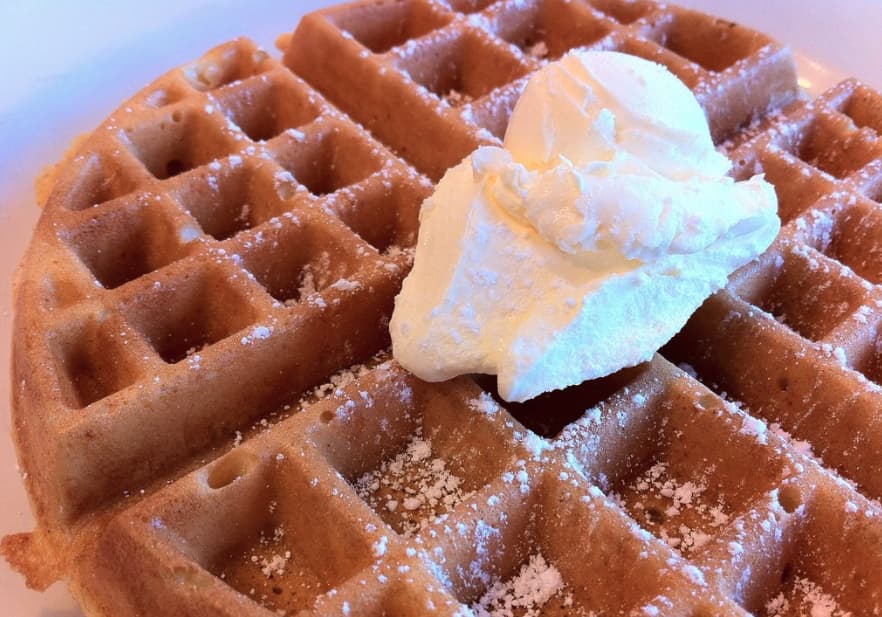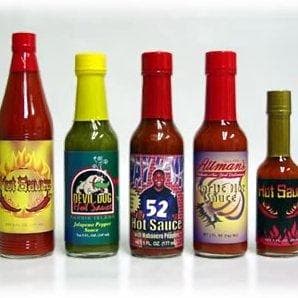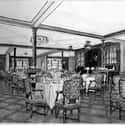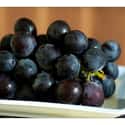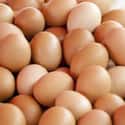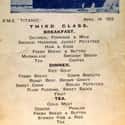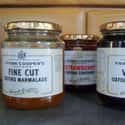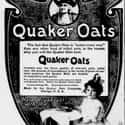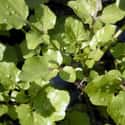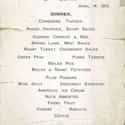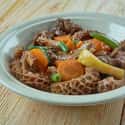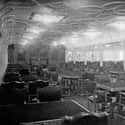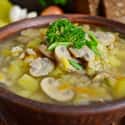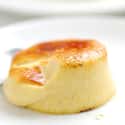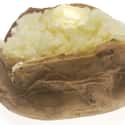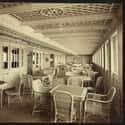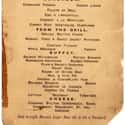-
(#1) Ice cream
- Food
There was plenty of ice cream on Titanic - 1,200 quarts, to be exact - but the type of ice cream varied by social class. First-class passengers were served French ice cream as dessert following dinner, while second class was given American ice cream.
French ice cream was made richer and heavier, closer to custard because it was made with egg. Elaborate desserts in first class, like French ice cream, were overseen by Adolf Mattman, listed among the crew as "Ice Man," who was in charge of frozen treats on the ship.
-
(#2) Grapes
- Film
With 1,000 lbs. of grapes on Titanic, there were plenty to go around. Fresh fruit, such as hothouse grapes, was present at breakfast for first-class passengers and at lunch and dinner for diners in second class, but the grapes eaten were very different.
Unlike their counterparts in first class, second-class passengers had to pull grapes off the bunch by hand. First-class passengers were given grape scissors for the task.
There were anywhere from 100 to 1,500 pairs of grape scissors aboard Titanic.
-
(#3) Eggs
Eggs were served to passengers from all classes, most commonly - but not always - at breakfast.
There were 40,000 fresh eggs aboard Titanic and first-class passengers enjoyed a plethora of egg preparations throughout the day. Fried, shirred (or baked), poached, and boiled eggs for breakfast accompanied Egg à l'Argenteuil for lunch. Egg à l'Argenteuil was a scrambled egg dish that included asparagus.
Second-class passengers were fed fried eggs and grilled ham for breakfast, an option similar to what third-class eaters were given. In third class, however, they were simply called "ham and eggs," with no information on how the items were prepared.
-
(#4) Fish And Seafood
Fresh, salted, and dried fish constituted 15,000 lbs. of foodstuffs on Titanic. Types of fish included herring, salmon, brill, haddock, and anchovy, all of which were served in first class. First-class passengers could dine on smoked salmon alongside fresh herring and Finnan haddock - a cold-smoked haddock named for the Scottish town - for breakfast.
Lunch fish choices for first class included Norwegian anchovies, plain and smoked sardines, soused herrings, and salmon mayonnaise served buffet-style. Soused herrings were prepared by soaking the fish in wine or vinegar before cooking and serving it cold, while salmon mayonnaise was just as it sounds. At the end of the day, first-class passengers ate salmon in Mousseline sauce (similar to Hollandaise sauce) with cucumber as an early dinner course. Shrimp and oysters were also available in first class.
In second class, fish was served at breakfast and dinner, including Yarmouth Bloaters. Yarmouth Bloaters were a type of cold-smoked herring. A baked haddock in a sharp sauce at dinner included fish served in a sauce made of brown sugar, onion, tomato paste, mustard, hot pepper, and Worcestershire.
Third-class passengers had one fish choice in a day - smoked herring at breakfast.
-
(#5) Sweet Spreads
Sweet spreads - jelly, marmalade, jam - were common meal staples on Titanic, but the varieties declined the lower one's social class. Third-class passengers had marmalade at breakfast and a sweet sauce served with dinner, while second class diners enjoyed marmalade with additional wine jelly.
In first class, Chartreuse jelly notwithstanding, they could choose from black currant conserve, Narbonne honey, and Oxford marmalade at their morning meal. Oxford marmalade, Frank Cooper's version of the traditional British spread - was made from oranges, syrup, sugar, and pectin.
All of the sweet spreads would have been eaten on fresh bread, something everyone aboard Titanic could find in abundance.
-
(#6) Cereal
- Food
Quaker Oats was available at the first-class breakfast on Titanic alongside puffed rice, another item made by the Quaker Oats Company.
Walter Donald Douglas, whose father owned a cereal mill in Iowa that later became part of Quaker Oats, was on board Titanic and served as an executive at the company. Douglas perished on Titanic after watching his wife and their maid board a lifeboat. He supposedly refused to join them, indicating to leave the ship before all of the women and children was to be "less than a man" and he was "a gentleman."
Oatmeal was used to make porridge for breakfast in steerage and the evening gruel could have been made from any grain, such as rye, wheat, rice, or oats.
Other cereals and grains - there were 10,000 lbs. of cereal on board - included corn used in bread and buckwheat made into cakes.
-
(#7) Watercress
At the time, watercress was believed to be healthy and help with digestion. As a result, it was served in abundance in the first and second classes at the end of breakfast.
In first class, watercress was served for dinner as well. On April 14, roast squab was served on a bed of cress. Modern chefs attempting to recreate the dish assume the watercress was wilted.
-
(#8) Fruit
- Food
In addition to 1,000 lbs. of grapes, Titanic had 180 boxes of oranges, 50 boxes of lemons, and 50 boxes of grapefruit. Fruit was served to passengers in first, second, and third class, found at multiple meals a day for the higher classes. First class had fresh fruit at breakfast with baked options at other meals. With 36,000 lbs. of apples on board, first-class passengers were treated to baked apples in the morning and meringue apples at lunch.
Applesauce at dinner accompanied roast duckling, but if diners wanted something different, they could eat peaches in Chartreuse jelly. As a dessert, it featured peaches, sugar, Chartreuse liqueur with gelatin alongside cinnamon, cloves, and lemon juice. It may have been served on French ice cream.
Second class had fruit choices at all three meals, although they were much less elaborate in presentation. Simple fruit at breakfast accompanied fresh fruit at lunch and dinner alongside plum pudding. Third class was given fruit at dinner, but it's unclear how it was presented. Stewed figs were also served at tea on April 14th.
-
(#9) Fried Tripe And Onions
One item served in steerage that didn't appear anywhere else on the ship was tripe. Tripe - the lining of an animal's stomach - was prepared with onions on Titanic. Tripe was most often boiled, but it appears to have been fried on Titanic.
Most commonly derived from a cow, tripe was something with which many third-class passengers would have been familiar and enjoyed. This may have been why it was served in third-class, especially since the kitchen crew aboard Titanic consciously prepared meals to both nourish and comfort passengers.
-
(#10) Lamb and mutton
- Food
Lamb, meat from a very young animal, and mutton, flesh from a slightly older animal, were both served at breakfast in first class. Grilled mutton was one option while lamb collops, a piece of lamb seasoned, breaded, and fried, was available too.
Diners in first class could also have mutton chops, grilled to order, at breakfast and lunch. Lamb with mint sauce for dinner was served to first- and second-class passengers on April 14th, a traditional combination in British and Irish cuisine.
Third-class passengers were not given any lamb or mutton at any time of day.
-
(#11) Soup
In first class, soup was one of many courses served at dinner. In third class, however, soup or stew could constitute a significant contribution to the dinner meal.
Consommé Fermier and Cockie Leekie opened lunch in first class on April 14th, while the soup choices were cream of barley or Consommé Olga. Consummé Fermier was essentially broth, most likely vegetable since fermier means "farmer" in French. Cockie leekie featured leeks, chicken stock, perhaps some rice or barley, and additional seasoning.
Cream of barley soup was most likely made with beef or chicken stock, barley, diced vegetables, and lots of fresh cream.
Consommé Olga was a somewhat lighter option, made out of beef stock, tomato puree, vegetables, and beef.
Second-class passengers were served pea soup for lunch while steerage ate rice soup at mid-afternoon dinner. The bright green color of pea soup would have been a stark contrast to the subdued tones of rice soup, but both were hearty, warm, and readily available.
-
(#12) Pudding
- Food
Pudding, while complicated when it comes to what exactly it means in the culinary world, did appear on menus for first-, second-, and third-class passengers on Titanic.
In first class, custard pudding was served at lunch and Waldorf pudding was a dessert choice at dinner. Custard pudding, similar to a Crème brûlée, was made with eggs, sugar, milk, and varying flavors. Recipes for Waldorf pudding traditionally include fruits and nuts mixed into a vanilla pudding of sorts.
Second class got tapioca pudding for lunch and plum pudding for dinner, the latter of which could be found in steerage as well.
-
(#13) Potatoes
- Food
Potatoes, an easily transportable foodstuff, were boiled, mashed, roasted, sauteed, and jacketed throughout the day on Titanic.
Titanic had 40 tons of potatoes on board. At breakfast, first class could choose to eat mashed, sauteed, or jacket potatoes, comparable to the choices of mashed and fried potatoes in second class. Second class could also eat American dry hash au gratin, a mixture of corned beef, potatoes, butter, and cheese.
Third class had one potato option for breakfast - jacket potatoes. Dinner in steerage, the biggest and heartiest meal of the day, could also include boiled potatoes with meat and various vegetables.
At lunch, first class again had a choice of potatoes served mashed, fried, or baked. For dinner, first-passengers ate Filet Mignons Lili, a piece of meat served on sliced, buttered potatoes. Another potato option included Chateau potatoes, oval-shaped potatoes often served with a bearnaise sauce. Parmentier and boiled new potatoes, yet more choices, were served diced and whole, respectively.
-
(#14) Bread
- Food
The selection of bread on Titanic attests to the diversity of the culinary influences and the passengers. While Titanic departed with 1,000 loaves, the kitchen crew did bake fresh bread each day. Similarly, they hoped to provide foods all passengers found appealing and sustaining, providing bread at every meal for all classes.
In steerage, fresh bread and butter were present at breakfast, as was Swedish bread - the exact recipe for which remains unknown. Fresh bread at dinner accompanied cabin biscuits, essentially a cracker that was served at late-supper as well. At tea, steerage passengers dined on fresh bread and butter with cold meat, cheese, and pickles.
Second-class passengers had biscuits at lunch and dinner with soda scones, buckwheat cakes, and Vienna and Graham rolls at breakfast. Soda scones, traditionally an Irish or Scottish item, were relatively easy to make with flour, sugar, salt, milk, and baking soda. Vienna rolls were also known as Kaiser rolls, while Graham rolls were simply baked with Graham flour.
In first class, bread options were similar, with additional Sultana scones and cornbread options available.
-
(#15) Beef
- Food
The 75,000 lbs. of fresh meat on Titanic meant cuts of beef on Titanic included filet mignon, sirloins, roast beef, and more.
In first class, passengers had several choices at each meal, with filet mignon and sirloin of beef being served as two-course options at the same meal. At lunch, first-class diners could enjoy roast beef or spiced beef, with cold meats and sirloin steaks to order offered at dinner.
In second class, roast beef accompanied ox tongue and sausage at lunch, but in steerage, the solitary beef option was roast beef and brown gravy. Meat, potatoes, soup, vegetables, and a nice plum pudding would have been more than sufficient, if not extravagant.
Other meats in first class included kidneys, bacon, and ham no fewer than four ways. Corned beef, chicken, and turkey rounded out meat choices in second class, making it clear where the 7,500 lbs. of ham and bacon and the 25,000 lbs. of poultry were served. It should be noted that Titanic did have kosher meat for diners as well.
New Random Displays Display All By Ranking
About This Tool
In April 1912, French cuisine chef Auguste Escoffier, known as the king of chefs, developed a dinner menu for the first-class cabin of the Titanic. On that night, this luxury cruise hit an iceberg, and since then we can no longer know whether his Olga clear stew and roast pigeons have been successful. The cabins of this dream ship are divided into first-class, second-class, and third-class, and the level difference is also reflected in the foods for different cabins.
Everyone is curious about the history of the Titanic. There are not only the most legendary and romantic love stories but the meals are also worthy of attention. The random tool will introduce 15 foods that passengers did eat on the Titanic.
Our data comes from Ranker, If you want to participate in the ranking of items displayed on this page, please click here.




